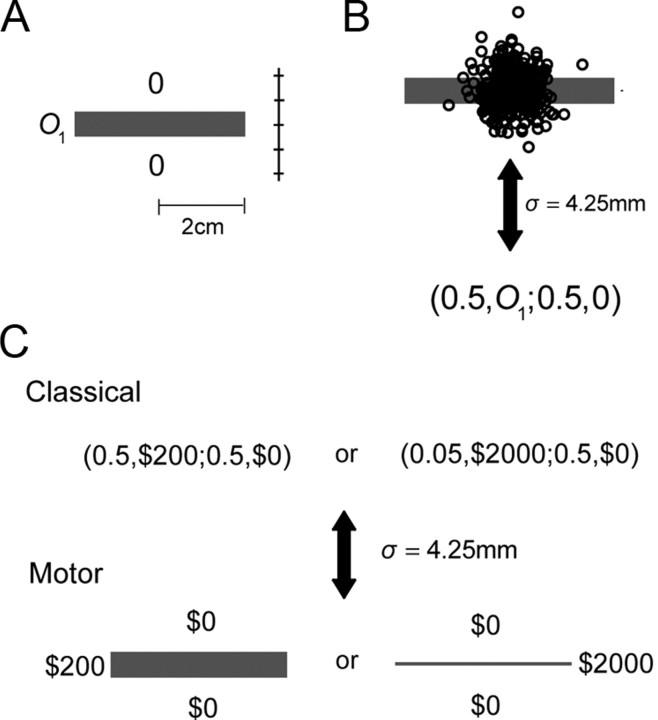Figure 1.
Construction of a motor lottery. A, A single target of a rapid pointing task. The subjects rapidly attempted to hit such targets with the index fingers of their dominant hand. B, A total of 355 movement endpoints for one subject are superimposed. The distribution is close to isotropic bivariate Gaussian with σ = 4.25 mm. The height of the target was adjusted so that this subject had a 50% chance of hitting the target and earning a reward O1. The resulting motor lottery was equivalent to a lottery (0.5, O1; 0.5, 0). C, In a later session, the subjects were shown either pairs of classical lotteries or pairs of motor lotteries and were simply asked to choose the one they preferred. A pair of classical lotteries in which information about monetary outcomes and their probabilities were explicitly stated and a pair of equivalent motor lotteries in which probabilities were implicit in the subjects' own motor noise are shown. The chosen lottery was not executed after subjects made their choices and hence no feedback on winning was available during the decision-making session.

